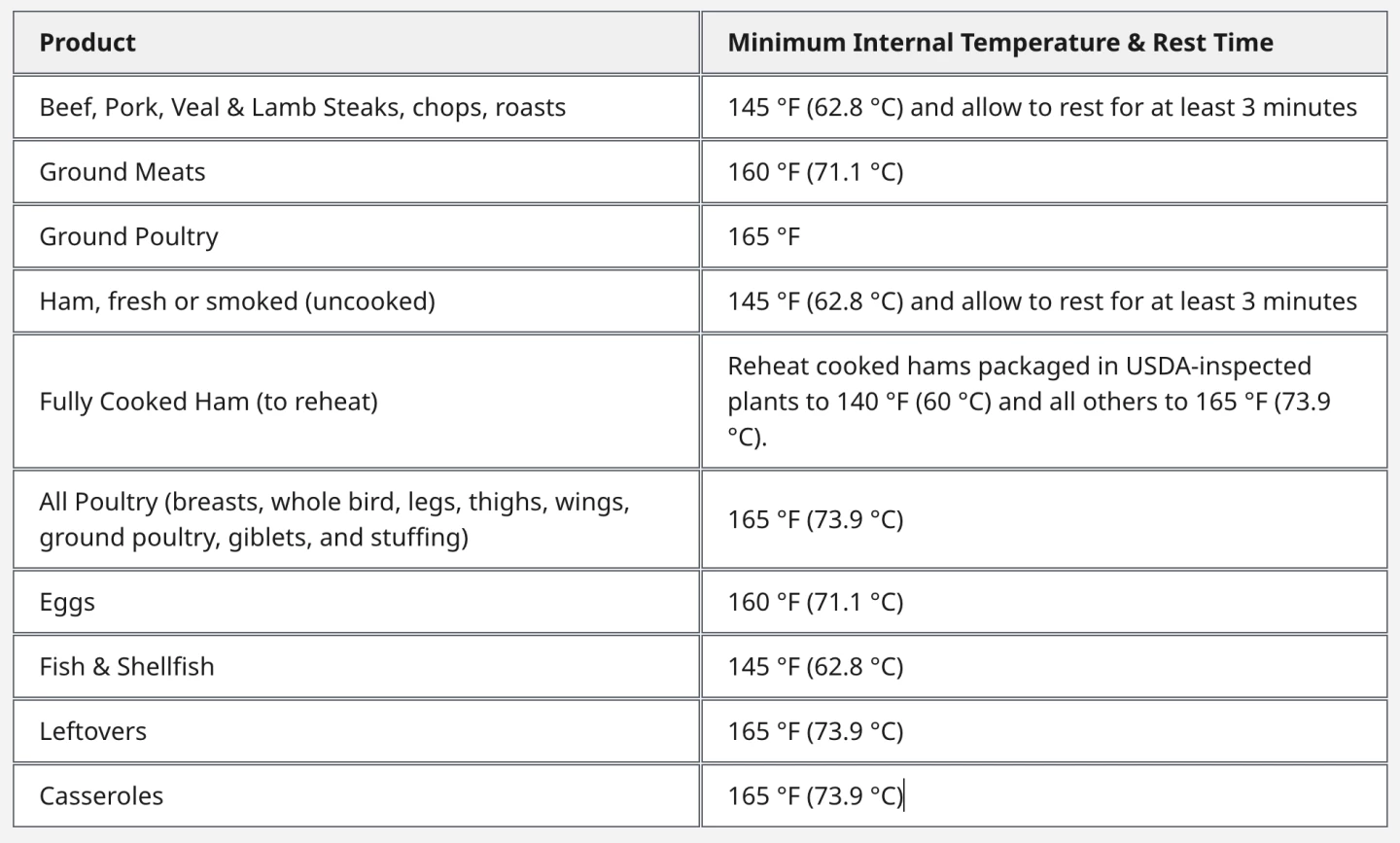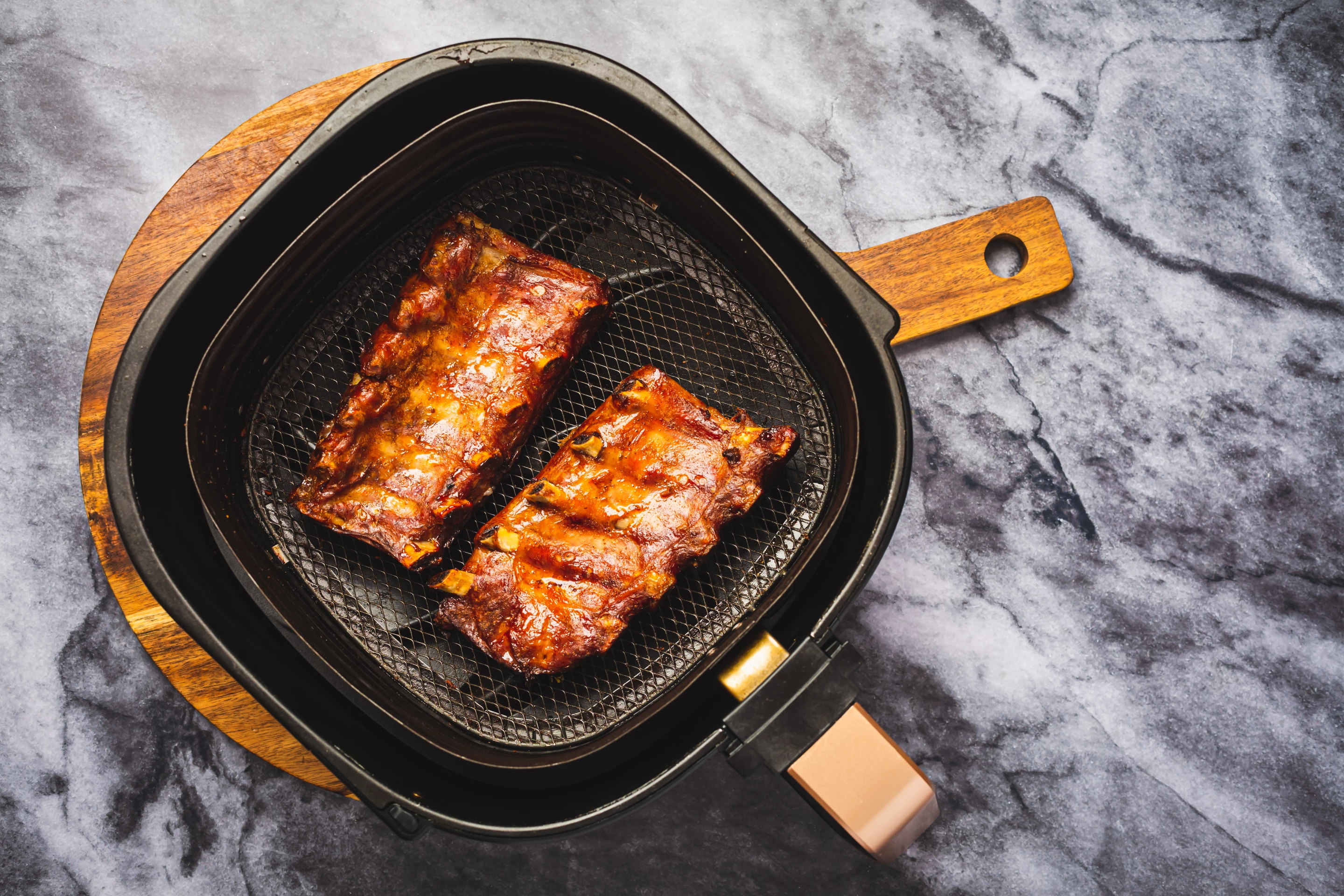It's nearly 15 years since the first air fryer as we know it hit the market, but food companies and consumers are still catching up when it comes to food safety and these game-changing kitchen gadgets. Experts say better instructions and user awareness will lower the risk of food-related illness.
While the first air fryer was patented in 1945 by William Maxson – called the Maxson Whirlwind Oven – it was Dutch inventor Fred van der Weij who took the design and ran with it in the mid-2000s. And it was his egg-shaped device made by Philips that first hit the market in 2010. While the growth in popularity was slow, it soared during the pandemic, and as of 2021, according to data research company Circana, two-thirds of American households had an air fryer – up from 11% in 2017. And in a 2023 Kitchen Audit Study from the same firm, which surveyed a "representative sample of adults" across the country, two thirds of those who own the gadget use it at least weekly.
But the food industry is still playing catch-up with consumers, with many products on grocery store shelves still lacking air-frying cooking instructions. This, along with variables in air fryer manufacturers' guidelines and differing basket design and size, exposes people to a higher risk of food poisoning.
The spotlight was on the air fryer during Australian Food Safety Week, with the Food Safety Information Council outlining how important it is to follow cooking instructions closely, rather than relying on guesswork, in order to minimize health risks.
"Air fryers are convenient and easy to use, but there have been individual food-borne disease cases around the country linked to air fryers, especially when cooking crumbed products that may look cooked on the outside but aren’t fully cooked on the inside," said Lydia Buchtmann, CEO of the Food Safety Information Council that surveyed 1,229 adults about their kitchens and cooking habits.
Much like across the US, you'll find air fryers in the kitchens of around two-thirds of households in Australia.
"We would also encourage food manufacturers to ensure cooking instructions for air fryers are listed on packaged food that can be cooked that way," she said. "Our research shows that 44% of air fryer owners find these instructions most of the time on crumbed (breaded), packaged food and the same proportion (44%) only find air fryer cooking instructions occasionally on crumbed food. It would be highly beneficial if manufacturers listed air fryer cooking instructions on more packaged products."
The US Department of Agriculture (USDA) food safety department advises that raw, stuffed breaded chicken breast products should never be cooked in an air fryer. Because of the way the appliance works – with hot air circulation rapidly heating food – these particular items may look perfect on the outside but be undercooked in the center.
"Foods generally require five to 25 minutes of cooking at a temperature range of 350 °F (177 °C) to 400 °F (204 °C)," states the USDA. "When available, consumers should follow manufacturer’s instructions on food packages to ensure food is safely cooked. Always check that food has reached a safe minimum internal temperature with a food thermometer."

A thermometer is recommended in general to ensure meat, especially, is cooked to recommended temperatures as outlined by the USDA. Air-frying baskets are smaller than the space for cooking in traditional ovens, and overfilling them will result in uneven or undercooked food.
Other risks include leaving food in the basket for an extended period of time after cooking, not washing the basket between meals and mishandling the reheating of leftovers.
"Finally, we would also remind consumers to 'Look before the cook' and check cooking and storage instructions and date marking on all food packaging," Buchtmann added. "The same research shows that only three in 10 consumers say they always read cooking and storage instructions, with only six in 10 always reading use-by dates and five in 10 always reading best-before dates."
There are many benefits of air fryers – they cook fast, crisp up foods without additional oil and consume less energy – and can handle a huge range of raw and pre-cooked products to bake, roast and reheat, including chicken nuggets, fries, meatballs, chicken wings and spring rolls. But, the food safety bodies say, products need more specific air-frying directions on packaging, and their versatility still requires vigilance to prevent illness.
The USDA's four key tips for air fryer users are:
- Clean: Always wash hands with soap and water for 20 seconds before and after preparing food. Clean and sanitize surfaces before and after food preparation.
- Separate: Don’t place cooked food on the same plate that previously held raw food. Raw meats, poultry and seafood should be kept away from cooked foods or other foods that are ready to eat to prevent cross-contamination. Use separate cutting boards – one for raw meat and poultry and another for fruits and vegetables.
- Cook: Be sure not to overfill the air frying basket to avoid uneven cooking and undercooking. Cook all air fried foods to a safe minimum internal temperature and measure with a food thermometer.
- Chill: Don’t forget about your cooked food sitting in the air fryer. Leftover foods should be refrigerated within two hours, otherwise they can enter the 'Danger Zone.' The Danger Zone is the range of temperatures between 40 °F (4 °C) and 140 °F (60 °C) where food-borne illness bacteria multiply and can reach dangerous levels.
Source: US Department of Agriculture, Food Safety Information Council





